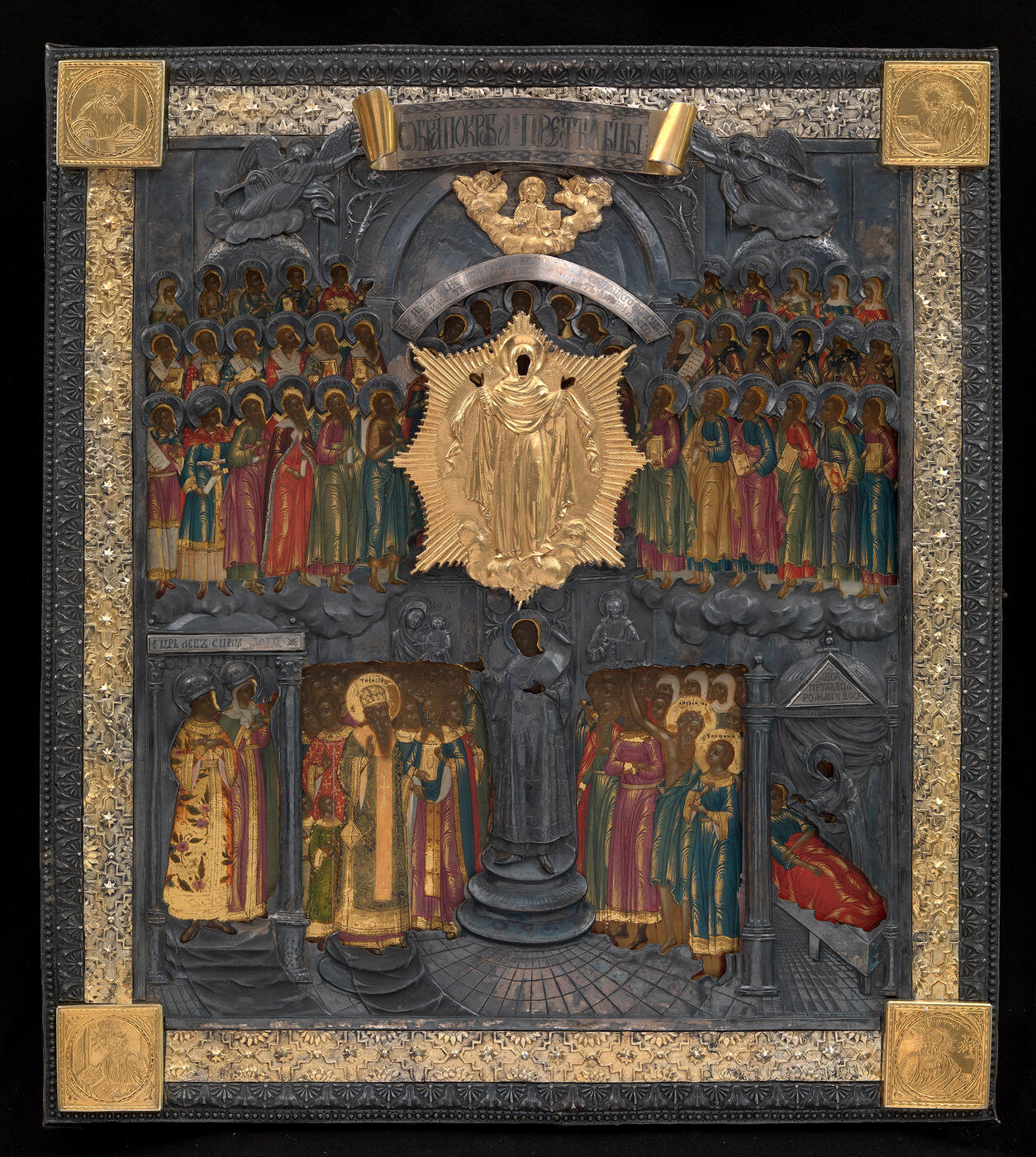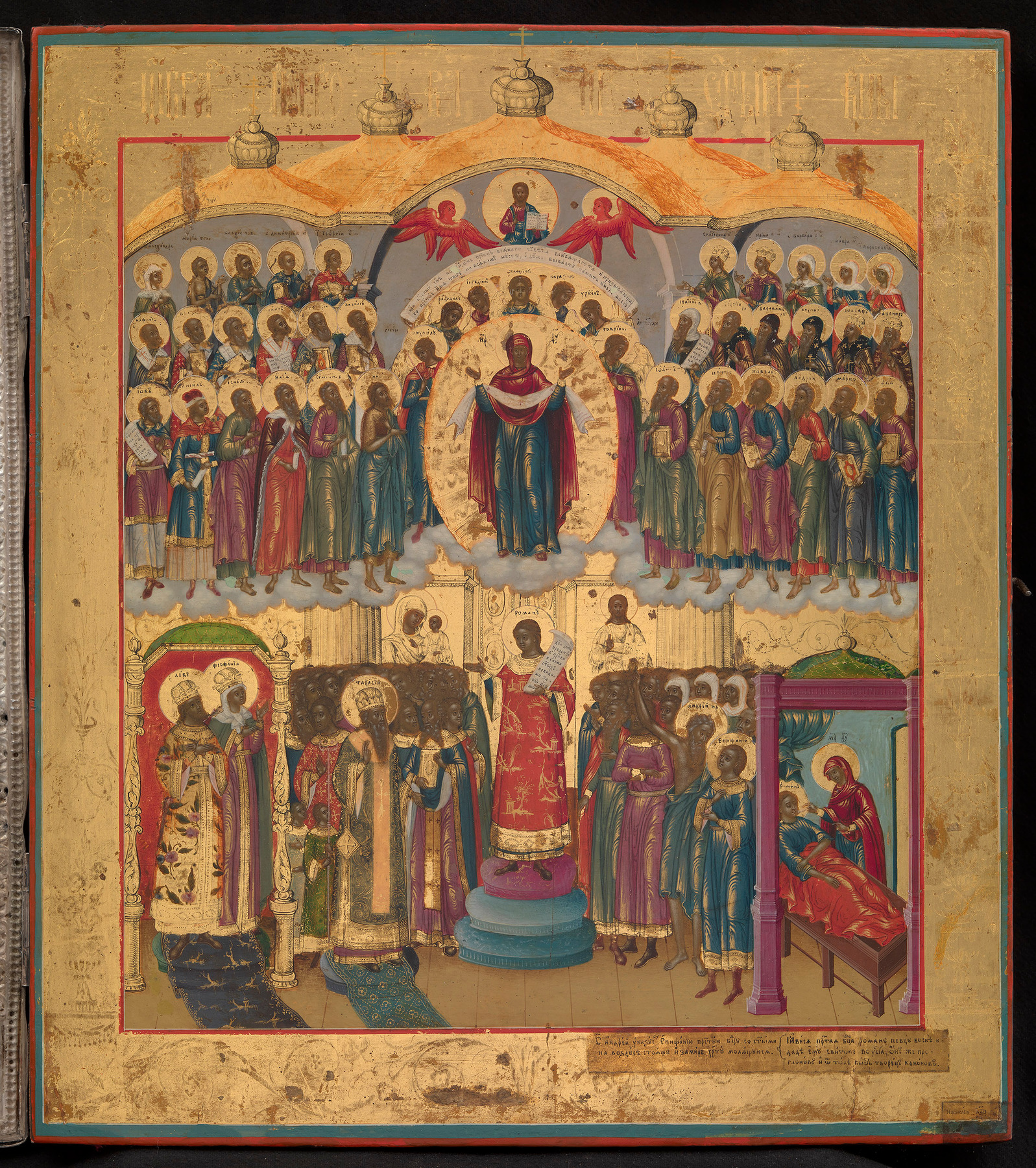5 June 2013 Russian Art Auctions
5 June 2013

* 607. THE POKROV WITH A SILVER AND NIELLO PARCEL-GILT OKLAD
OLD BELIEVERS' WORKSHOP, DATED 1807, OKLAD EARLY 19TH CENTURY.
38 by 34 cm.
30,000–40,000 GBP
This artefact is an original masterpiece of Russian art from the Empire style period. On the lower border of the icon, in the righthand corner, appears the date: ‘Painted 1807’. The iconography is well-developed and its two subjects are referenced on the border inscription; the Holy Fool Andrei’s vision (“St. Andrei shows Epiphanius the Most Holy Mother of God, standing and praying for peace”) as well as the vision of Roman Pesnopevets. Judging by the numerous blessing gestures made with two fingers and the use of the Old Russian name ‘Marko’ for the Apostle, this icon was made by a master from an Old Believer community.
Whilst the finely-drawn faces and figures and the rich colour palette abundantly enhanced with gold make this an outstanding work, the highest degree of mastery is shown in the various techniques combined in the oklad – the chasing, high-relief repoussé, niello, gilding – and the overall, perfect composition. Although the high-relief work preserves the icon’s integrity, the master pursued a different three-dimensional interpretation and added two angels, blowing trumpets and supporting a title scroll. This secondary detail demonstrates the author’s fine taste and artistic gift: the unfurled part of the scroll has an ornamental niello script, whilst the gilded, curling scroll-ends project distinctly from the surface. The inner gilded border may symbolise the completeness of God’s creation; the gilded corner-plaques of the Evangelists may also point to God’s presence in everything. The image of the Saviour in the clouds, bestowing His blessing, is also emphasised in gold. However, attention is drawn mainly to the gilded, central detail of the Theotokos and mandorla, which embodies the jeweller’s creative thought. This icon’s oklad, executed in the Empire style, is a unique piece of decorative, applied art. The absence of stamps on the silver oklad testifies to the individual nature of a commission fulfilled for a particular person.

Notes on symbols:
* Indicates 5% Import Duty Charge applies.
Ω Indicates 20% Import Duty Charge applies.
§ Indicates Artist's Resale Right applies.
† Indicates Standard VAT scheme applies, and the rate of 20% VAT will be charged on both hammer price and premium.